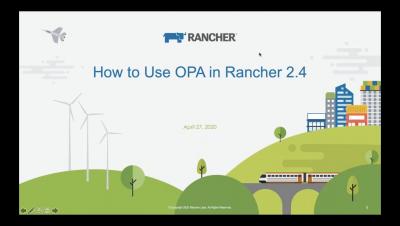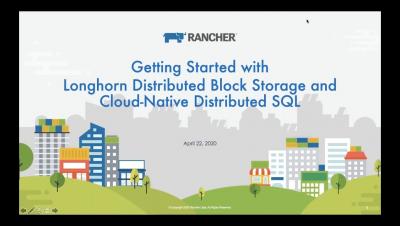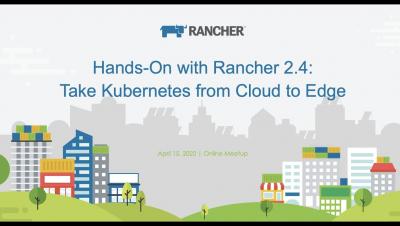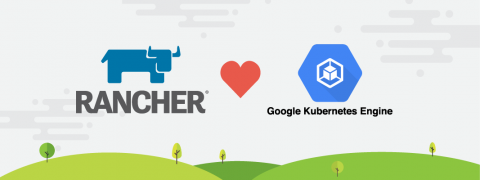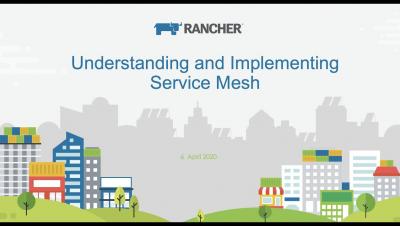Operations | Monitoring | ITSM | DevOps | Cloud
April 2020
Driving Sustainability in Retail with Kubernetes
“With sustainability our primary focus, our technology strategy has to mirror our overall approach. With Rancher we’re driving real transformation to prime us for long-term growth.” – Zach Dunn, Senior Director of Platform Operations and CSO, Optoro. Have you ever considered what happens to items you return to etailers? In retail, especially ecommerce, nearly 25 percent of all goods are returned or don’t sell.
Deploy Kubernetes Clusters on Microsoft Azure with Rancher
If you’re in enterprise IT, you’ve probably already looked into Microsoft’s Azure public cloud. Microsoft Azure offers excellent enterprise-grade features and tightly integrates with Office 365 and Active Directory. It also provides a managed Kubernetes service, AKS, that you can provision from the Azure portal.
Driving Agility and Scale in Mobile Payments
When is the last time you repaid a friend in cash for a shared expense? More likely, you used your phone and a handy app to pay your share. We’ve come to expect fast, secure and reliable technologies that let us make payments to anyone, anywhere from our mobile devices. So who is behind this technology?
Kuberrnetes Master Class - Getting Started with Longhorn and Yugabyte - 2020-04-22
Protecting Critical Infrastructure in Kubernetes and Rancher
“As we expand, it’s critical for our team to have both a fast and automated rollout process for each customer environment. In the end, each of our user’s access experience must be identical. Rancher is one product that’s critical to that strategy.” – Jeff Klink, VP Engineering, Cloud and Security Specialist, Sera4 Security worries keep many of us awake at night – no matter our industry.
Custom Alerts Using Prometheus in Rancher
This article is a follow up to Custom Alerts Using Prometheus Queries. In this post, we will also demo installing Prometheus and configuring Alertmanager to send emails when alerts are fired, but in a much simpler way – using Rancher all the way through. We’ll see how easy it is to accomplish this without the dependencies used in previous article.
Kubernetes Master Class - 2020-04-20 - Detecting Anomalous Kubernetes Activity with Falco
Enabling More Effective Kubernetes Troubleshooting on Rancher
As a leading, open-source multi-cluster orchestration platform, Rancher lets operations teams deploy, manage and secure enterprise Kubernetes. Rancher also gives users a set of container network interface (CNI) options to choose from, including open source Project Calico.
Kubeflow: The Answer to AI and ML in Kubernetes?
Kubeflow v1.0 was released on March 2, 2020 Kubeflow and there was much rejoicing. The banner announcement, “Cloud-Native ML for Everyone,” while clearly hyperbole, is evidenced by the streamlined command-line interface (CLI), informative and intuitive dashboard and comprehensive cloud provider documentation. Compounded with a best-in-class product suite supporting each phase in the machine learning (ML) lifecycle, Kubeflow stands unrivaled in the arena of ML standardization.
April 2020 Online Meetup: Hands On with Rancher 2 4 -- Take Hybrid Cloud Kubernetes to the Edge
Google Cloud Kubernetes: Deploy Your First Cluster on GKE
Google, the original developer of Kubernetes, also provides the veteran managed Kubernetes service, Google Kubernetes Engine (GKE). GKE is easy to set up and use, but can get complex for large deployments or when you need to support enterprise requirements like security and compliance. Read on to learn how to take your first steps with GKE, get important tips for daily operations and learn how to simplify enterprise deployments with Rancher.
Kubernetes on Azure: Deploy and Manage Your First Cluster in AKS
Most Kubernetes deployments live on the cloud. According to the CNCF, while 63 percent of companies use AWS for Kubernetes, 29 percent are deploying Kubernetes on Azure, and the number is rapidly growing. Microsoft Azure provides mature Kubernetes tools, primarily the Azure Kubernetes Service (AKS). In this post, we’ll show you how to run your first Kubernetes cluster on AKS, and how to manage enterprise Kubernetes deployments on AKS with Rancher.
Running Google Cloud Containers with Rancher
Rancher is the enterprise computing platform to run Kubernetes on-premises, in the cloud and at the edge. It’s an excellent platform to get started with containers or for those who are struggling to scale up their Kubernetes operations in production. However, in a world increasingly dominated by public infrastructure providers like Google Cloud, it’s reasonable to ask how Rancher adds value to services like Google’s Kubernetes Engine (GKE).
Rancher 2.4 Enhances Security with CIS Benchmark Scanning
Editor’s note: Rancher Labs’ William Jimenez provides an introduction to CIS Scan. Then Saiyam Pathak takes over with a hands-on demo. Cluster security is critical to any successful Kubernetes strategy. Recent research by AimPoint revealed that 44 percent of respondents had delayed application production due to security concerns around Kubernetes containers. Yet securing Kubernetes is a complex machine with many moving parts, integrations and knobs and levers.
Fighting COVID-19 One Kubernetes Cluster at a Time
Recently the leadership at Rancher Labs challenged all of us to think about ways we can contribute to the community during this current crisis. Coming up with ways to help in such an overwhelming situation is quite daunting. Since most needs are medical related, finding ways to apply software isn’t obvious. When I heard about Folding@home’s (FAH) efforts to reprioritize their computing resources toward COVID-19 research, I was immediately curious.
Privacy Protections, PCI Compliance and Vulnerability Management for Kubernetes
Containers are becoming the new computing standard for many businesses. New technology does not protect you from traditional security concerns. If your containers handle any sensitive data, including personally identifiable information (PII), credit cards or accounts, you’ll need to take a ‘defense in depth’ approach to container security. The CI/CD pipeline is vulnerable at every stage, from build to ship to runtime.
Kubernetes Master Class: Understanding and Implementing Service Mesh
Rancher 2.4 Keeps Your Innovation Engine Running with Zero Downtime Upgrades
Delivering rapid innovation to your users is critical in the fast-moving world of technology. Kubernetes is an amazing engine to drive that innovation in the cloud, on-premise and at the edge. All that said, Kubernetes and the entire ecosystem itself changes quickly. Keeping Kubernetes up to date for security and new functionality is critical to any deployment.
Fleet Management for Kubernetes is Here
Today I’m excited to announce Fleet, a new open source project from the team at Rancher focused on managing fleets of Kubernetes clusters. Ever since Rancher 1.0 shipped in 2016, Rancher has provided a central control plane for managing multiple clusters. As pioneers of Kubernetes multi-cluster management, we have seen firsthand how users have consistently increased the number of clusters under management.
Announcing Hosted Rancher with Rancher 2.4
We’ve heard from many of our customers and prospects that they love Rancher but just don’t have the staff and expertise to operate the platform. Figuring out the compute, storage and networking architecture can be a challenge. Performing upgrades, backups and troubleshooting can also be time consuming. Monitoring the environment and knowing when to scale up or down, horizontally or vertically, is yet another thing to worry about.


